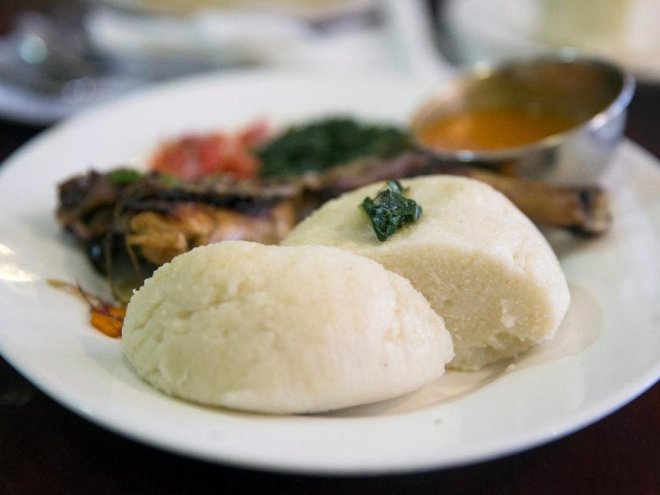
Friday May 26, 2017

A portion of Ugali, a dish made from maize flour, is seen in a restaurant in Nairobi, Kenya May 24, 2017.REUTERS
Food prices in Kenya are among the highest in the world, a researcher has said.
Dr Timothy Njagi, a researcher from Tegemeo Institute, said maize prices in Kenya are three times higher than the global market price.
“In Kenya, a tonne of maize in the local market is selling at Sh50,000 ($500 ) compared to the global market price of Sh15,000 ($150 ). A tonne of sugar in Kenya is selling at Sh120,000 and Sh40,000 globally,” he said.
According to the Regional Agricultural Trade Intelligence Network by the Eastern Africa Grain Council, a tonne of maize in Kenya is selling at between Sh56,045 and Sh85,068 in the wholesale and retail market, respectively. In Uganda, the same quantity is retailing at between Sh56,761 and Sh51,085. While in Tanzania, traders are selling it at between Sh55,097 and Sh68,871.
Interim head of Sugar Directorate Solomon Odera yesterday said imported sugar is selling at Sh6,300 per 50 kilogramme bag, while local sugar is retailing at between sh6,800 and Sh7,200, for the same quantity.
He said the current food prices are the highest the country has experienced in five year.
“The price of basic commodities such as maize and milk has increased significantly due to drought-related factors. However, the 2011 drought situation was more severe than this year, but the food prices did not escalate this much,” he said.
Agriculture PS Richard Lesiyampe had earlier said that after every five years, the country struggles with extreme weather conditions, which has a huge impact on the food balance sheet.
“The effects of climate change are real and in every four-five years cycle, we have to face an extreme drought. The rising temperature coupled with new crop diseases and pests will to a large extent restrain food production, leading to famine,” he said.
Njagi said the interaction between drought, policy and markets has been the major cause of high commodity prices in Kenya.
“In the next one year, the purchasing power of consumers will be interrupted as the cost of production is expected to remain high, while food productivity will be low,” he said.
Njagi said the country’s food production trend has been declining in the last two years, owing to numerous gaps along the value chain. The 2016-17 production year has been characterised by the prolonged drought, which has led to low food production.
“Wheat dropped by seven per cent to 222,000 metric tonnes, rice by 12 per cent to 102,000 metric tonnes and maize decreased by 14 per cent to 37 million bags. Equally, milk production to processors fell from 560,000 litres to 360,000 litres in the same period,” he said.
Kenya remains largely a net importer of key food – maize, wheat and rice. On average, the country imports more than 50 per cent of its demand for rice and wheat and seven-10 per cent of maize